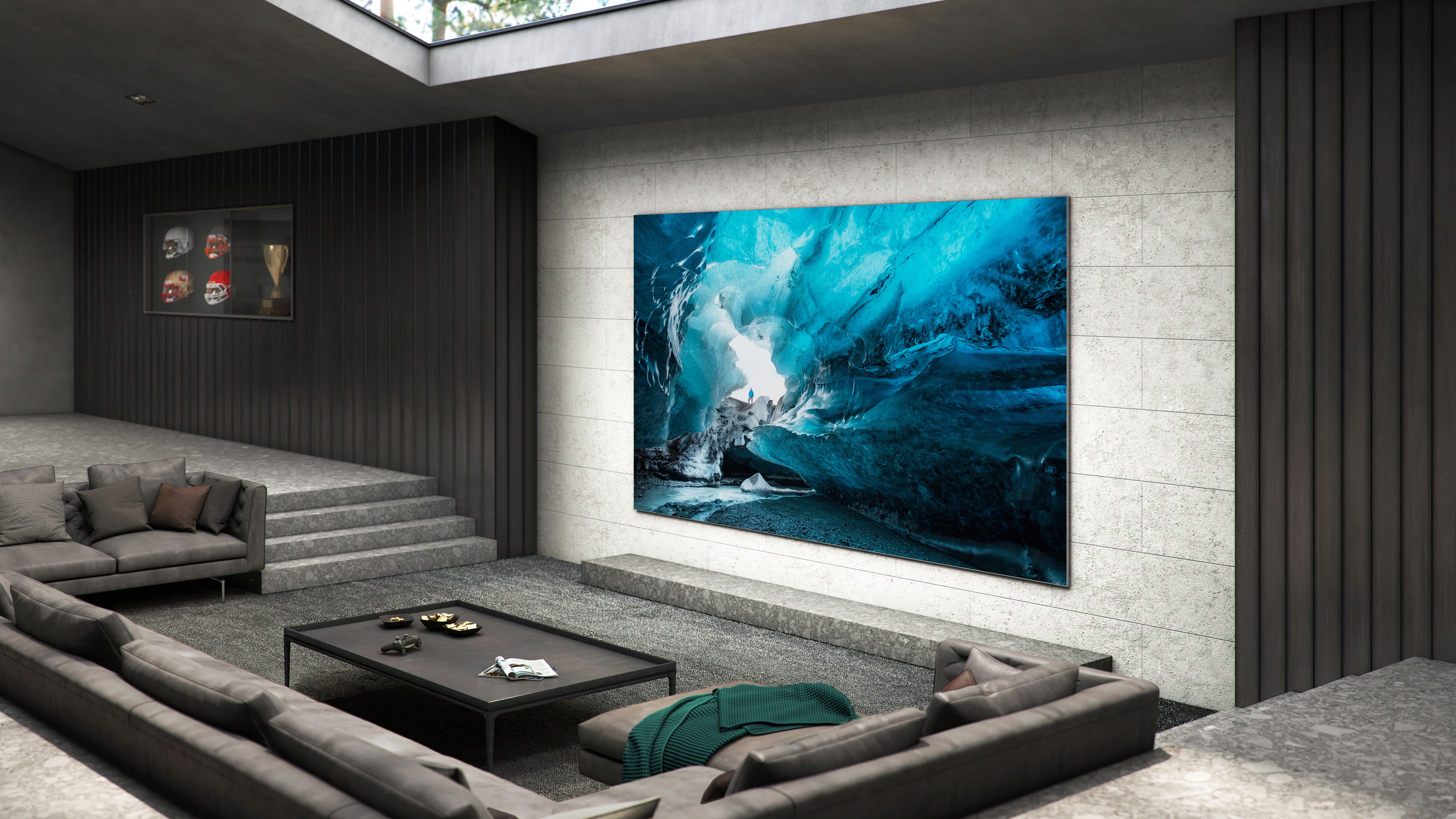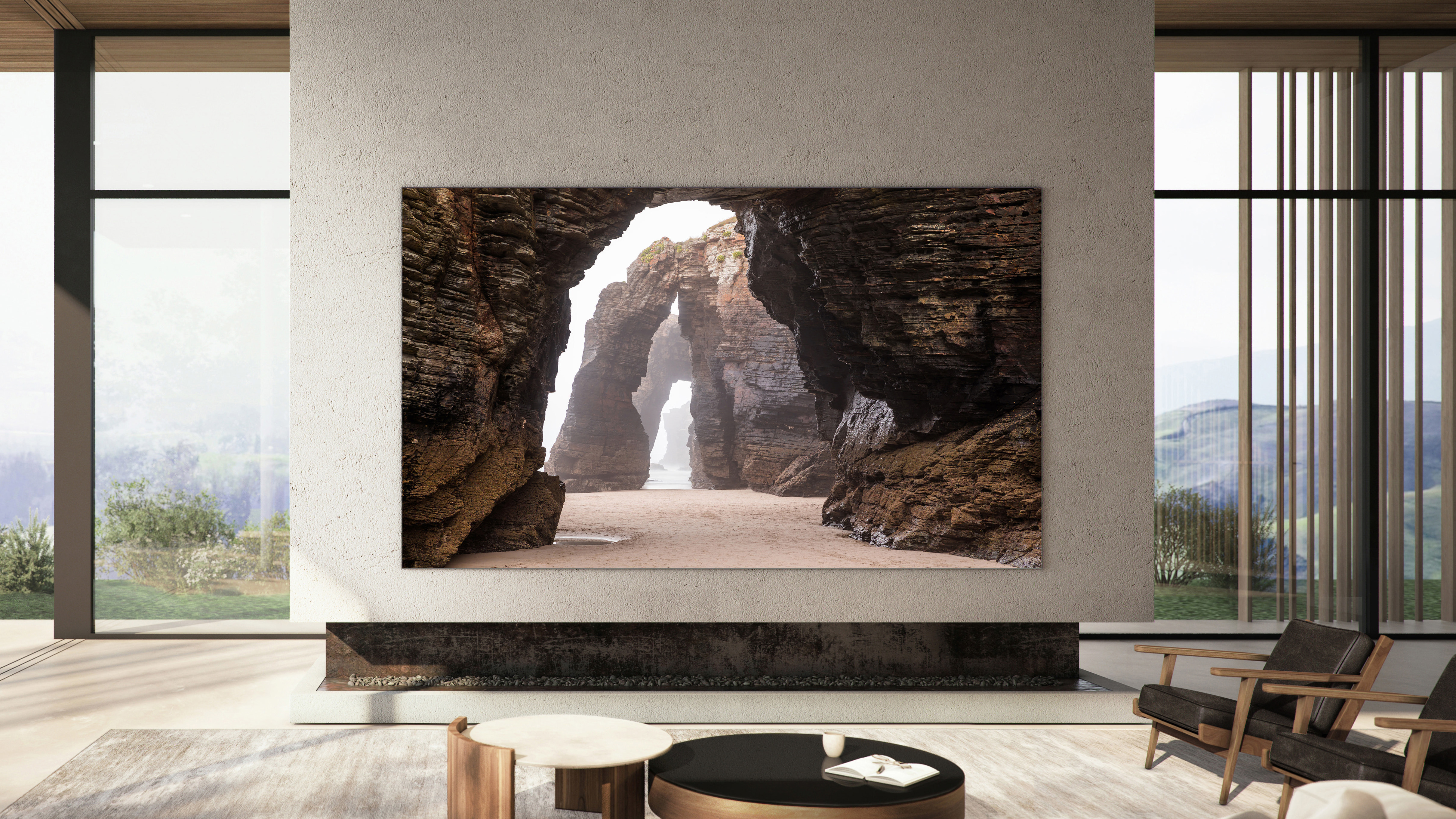Samsung's 110-inch MicroLED TV will challenge OLED in early 2021

After years of demos and teases, Samsung's giant MicroLED TV is finally becoming a reality, and it's coming to shoppers in the first quarter of 2021. Reborn as a 110-inch TV, the Samsung MicroLED TV offers 4K resolution and a stunning combination of innovative design and eye-popping performance.
The Samsung MicroLED TV uses individual micrometer-sized LED lights as individual pixels in the screen, like a JumboTron display shrunk down to provide modern resolutions. With each pixel serving as its own self-emitting light source, microLED technology promises the sort of perfect blacks and pixel-perfect contrast currently seen only on OLED TVs.
- The best TVs of the year
- The best Samsung TVs of 2020: QLED, microLED, and 8K TVs
- Latest: Samsung Galaxy S21 leak just revealed a surprise upgrade
With OLED's introduction in 2005 and QLED in 2013, the introduction of MicroLED displays offer the biggest innovation to screen technology in years, and Samsung hopes to make microLED a competitor to OLED in the coming years.
Initially called "The Wall," Samsung's early demonstrations of microLED TV technology involved a 12-foot modular system that used tiled segments to make its giant screen. Samsung was touting this modular design as the future of TV, letting you assemble a screen in any aspect ratio and scale up to any resolution, provided you had enough modular panels.
While that's an attractive feature for commercial signage, it's not much of a draw for regular TV viewers, so Samsung has ditched the modular concept in favor of a more traditional form factor, and scaled down the size to a relatively reasonable 9 feet.

According to Samsung, this prefabricated 110-inch model offers "stunning video, audio, and smart capabilities out of the box." The unique structure of microLED uses surface mount technology, with individual LEDs positioned directly on one side of a combined circuit board and display panel. This lets the MicroLED TV boast an impressive 99.99% screen-to-body ratio, eliminating the need for a surrounding bezel. And with no backlight required, the TV itself is very slim, allowing for mounting flush against a wall.
Smart capabilities will also let you use the giant TV as four 55-inch sized split-screens, each capable of 1080p resolution. While that could let you watch four ongoing sporting events at once, the TV will also have support for multiple devices in this mode, letting family members each have a screen for watching shows, movies or even gaming simultaneously.
Get instant access to breaking news, the hottest reviews, great deals and helpful tips.

The 110-incher features an embedded 5.1 channel sound system, without the need for an external speaker system. This will also be paired with Samsung's Object Tracking Sound Pro technology, which ties sound to the source on screen, making it seem like dialogue is coming from a specific actor, or sound from a vehicle as it passes by on screen.
While we haven't yet seen the Samsung MicroLED TV for ourselves, we have been able to see its predecessor, The Wall, up close on several occasions. The technology has delivered excellent picture quality and incredible brightness, and we expect to be similarly impressed with the MicroLED TV when it comes available for demo or review.
Pricing information has not yet been announced, but Samsung says that the MicroLED TV will be available to buy in the first quarter of 2021. We expect to learn more in January, with additional details expected during CES 2021.
Brian Westover is currently Lead Analyst, PCs and Hardware at PCMag. Until recently, however, he was Senior Editor at Tom's Guide, where he led the site's TV coverage for several years, reviewing scores of sets and writing about everything from 8K to HDR to HDMI 2.1. He also put his computing knowledge to good use by reviewing many PCs and Mac devices, and also led our router and home networking coverage. Prior to joining Tom's Guide, he wrote for TopTenReviews and PCMag.

